A long-duration solar flare measuring M9.4 erupted from Active Region 3615 (beta-gamma-delta) at 21:16 UTC on March 30, 2024. The event started at 21:01 and ended at 22:15 UTC.
There were no radio signatures that would suggest a strong coronal mass ejection (CME) was produced. Even if it was, the location of this region does not favor Earth-directed CMEs.
Radio frequencies were forecast to be most degraded over the W United States and the Pacific Ocean.
Solar activity is likely to be at moderate levels, with a slight chance (15%) for X-class flares, on March 31 primarily due to the flare potential of Region 3615 currently rotating around the W limb. R1 or greater events become unlikely on March 1 and 2 as the few sunspots remaining on the visible disk are relatively simple and stable.
A slight chance for S1 – Minor solar radiation storms will persist through March 31 primarily due to the flare potential and location of Region 3615. The greater than 2 MeV electron flux is expected to continue at normal to moderate levels through April 2.
Solar wind enhancements from a positive polarity coronal hole high speed stream (CH HSS) are likely to continue through April 2. Another weak enhancement from the periphery of a CME that left the Sun on March 26 is possible on March 31.
The geomagnetic field is likely to be at quiet to unsettled levels, with a chance for isolated periods of active conditions, over the next three days.
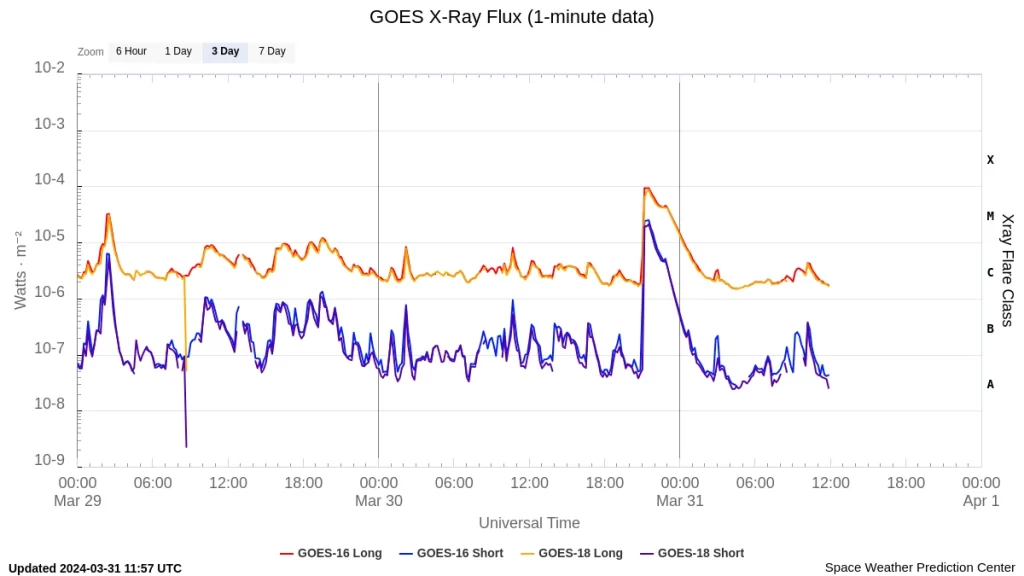
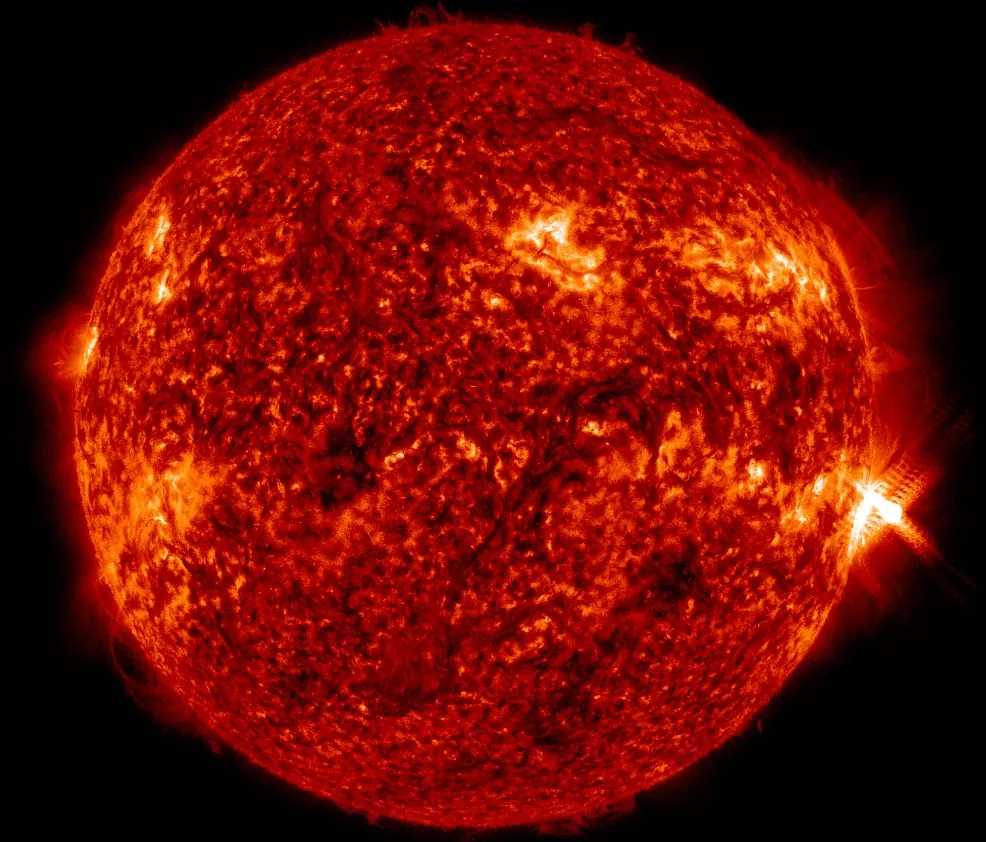

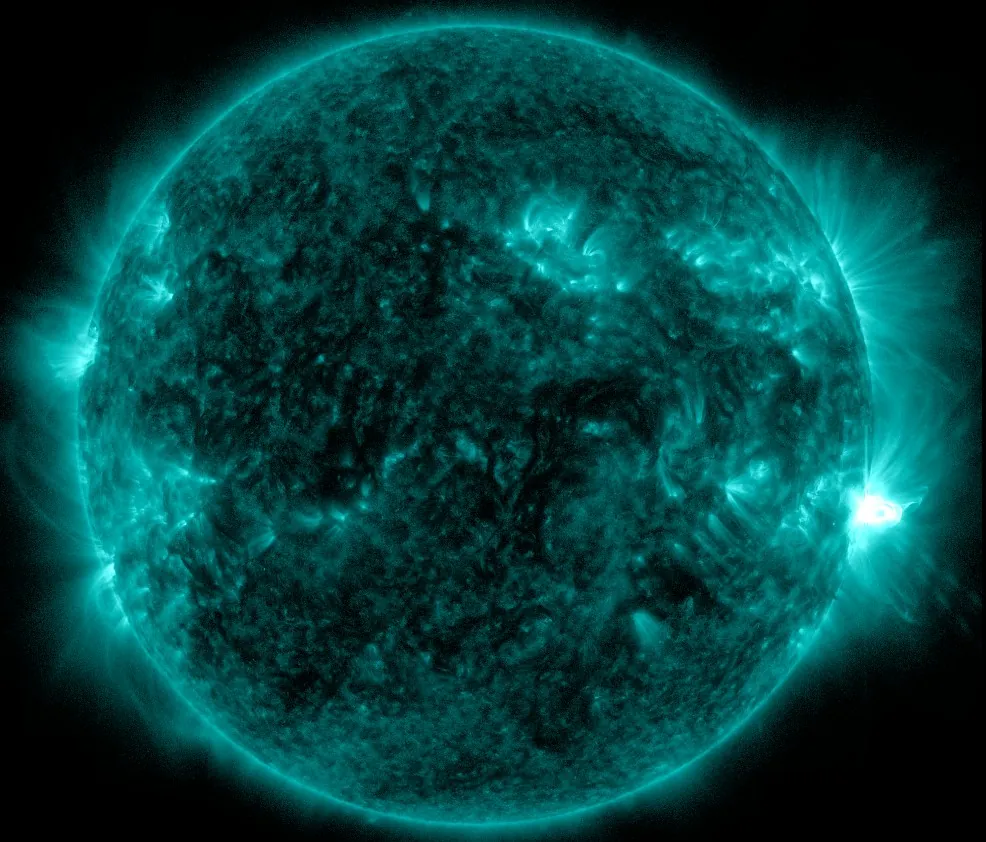

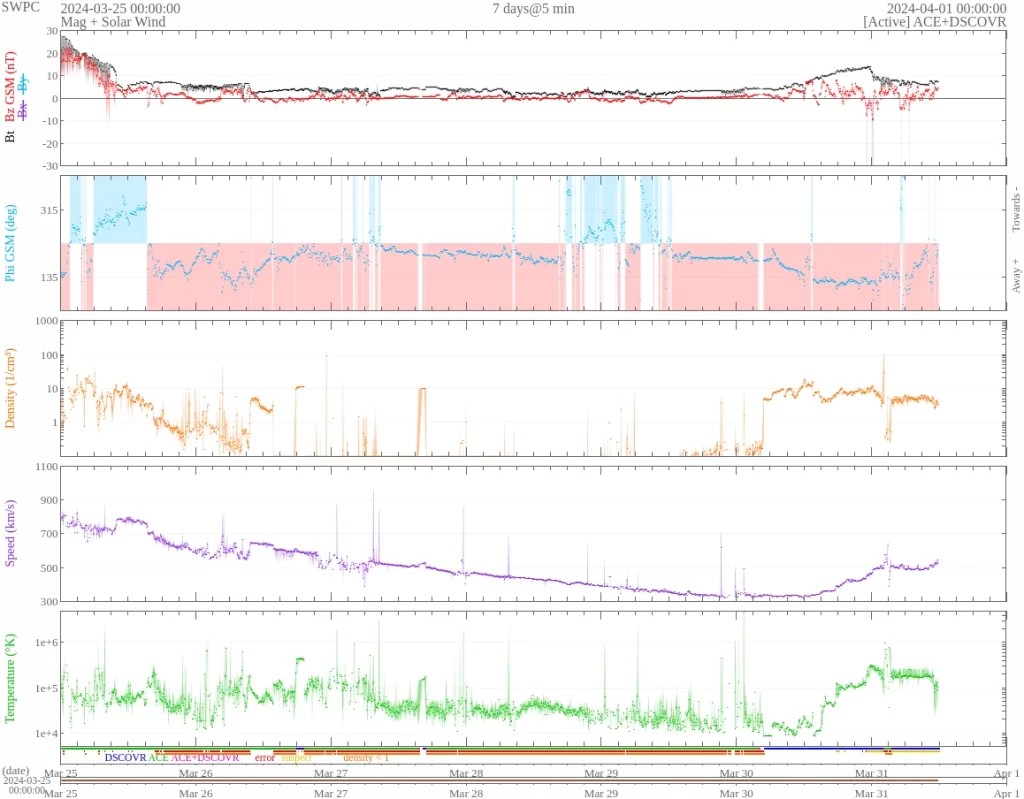

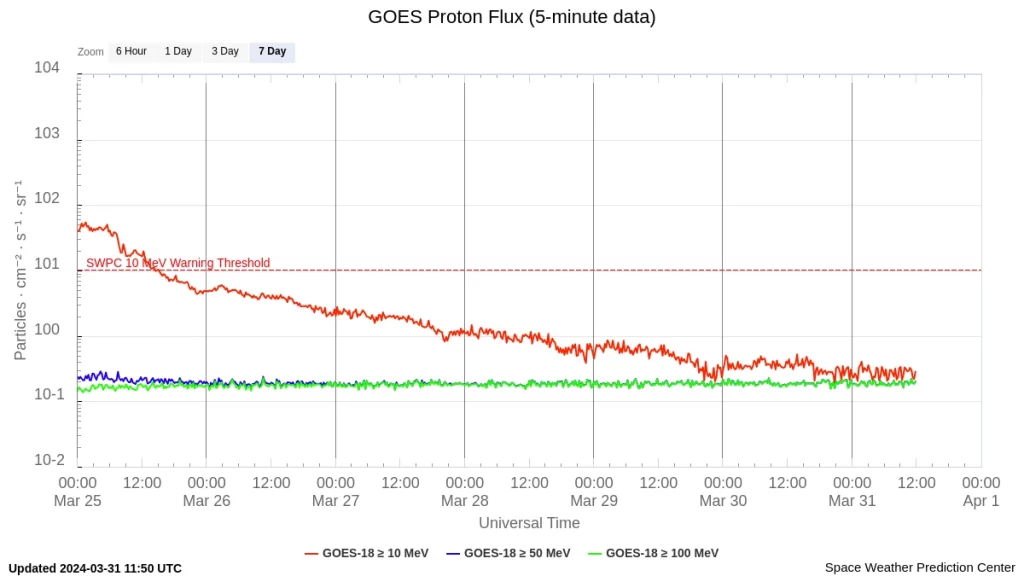

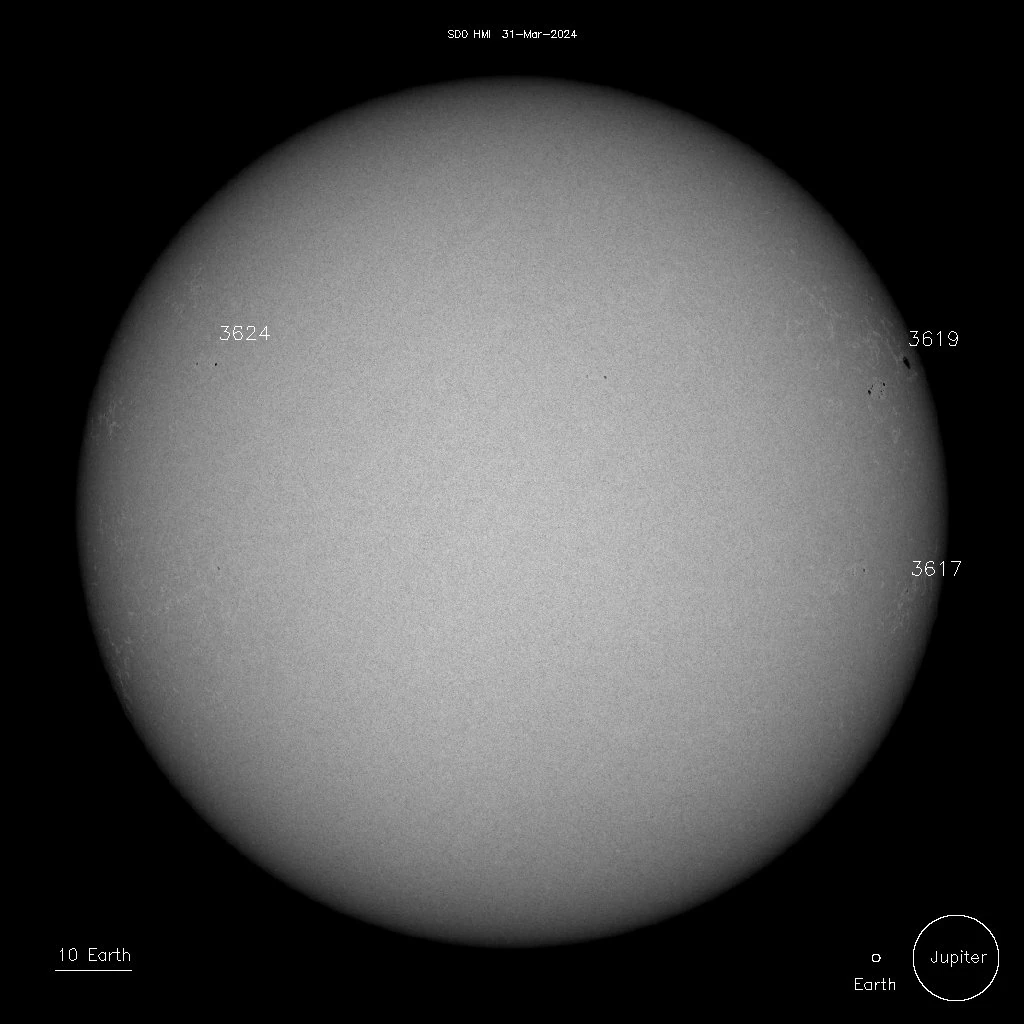

References:
1 Forecast Discussion – Issued: 2024 Mar 31 0030 UTC – Prepared by the U.S. Dept. of Commerce, NOAA, Space Weather Prediction Center
Featured image: M9.4 solar flare on March 30, 2024. Credit: NASA SDO/AIA 304, Helioviewer, The Watchers
Strong X1.1 solar flare erupts from AR 3615
Thursday, March 28, 2024
Strong M6.1 solar flare erupts from Region 3615
Thursday, March 28, 2024
Strong M7.1 solar flare erupts from Region 3615
Thursday, March 28, 2024
Major, long-duration X1.1 solar flare produces Earth-directed CME
Saturday, March 23, 2024
Strong M7.4 solar flare erupts from AR 3615
Wednesday, March 20, 2024
Strong M6.7 solar flare erupts from emerging region on SE limb
Monday, March 18, 2024
Filament eruption produces Earth-directed CMEs
Monday, March 18, 2024